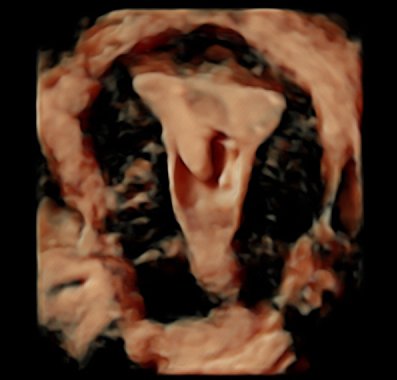
Ultrasound scan evaluation for the tubes permeability: Hysterosonography
To evaluate a couple with conception problems, we need to check if there could be some type of obstruction in the fallopian tubes, which are the ducts that connect the uterus with the ovaries, thereby preventing pregnancy.
In the early days of Reproductive Medicine, even insufflations were made through the uterus with the aim of trying to unblock the possible clogging. Later, with the help of radiography and radiologists, Hysterosalpingography was started as the technique of choice in the diagnosis of tubal patency.
Índice
Hysterosalpingography Limitations
Hysterosalpingography is a limited technique, where a correct diagnosis is not always possible, besides being painful, expensive, requiring radiation and iodinated contrast. In recent times and after the improvement of current ultrasound machines, it has been shown that an ultrasound technique called Hysterosonography is capable of reaching the same diagnosis as Hysterosalpingography.
What is the Hysterosonography about?
Since the existence of vaginal ultrasound, hysterosonography has been used as a tool added to conventional gynaecological ultrasound. Hysterosonography is nothing more than the infusion of saline serum in the uterus, as the liquid in the ultrasound looks like a black background. Thus, if a polyp or myoma existed, the entire interior of the black uterus would be observed, except that polyp or myoma, whose walls will be better distinguished, defining its contour.
Hysterosonography diagnosis uses
This was the Hysterosonography main objective, the cavity’s interior evaluation. Although it did not take long to realize that in addition, it could also be observed if a woman could have blocked or permeable tubes. It was as simple as seeing if that serum that we had suddenly introduced could be seen outside the uterus. Or, on the contrary, it was observed that the cavity did not empty at all.
Contrast hysterosonography: HyFoSy / HyCoSy
Since the mid-90s we have been trying to successfully improve this technique, introducing instead of saline, an ultrasound contrast. That is, a more visible substance which neither contains iodine. With contrast instead of seeing everything black, where many structures in the pelvis can be seen this colour (full bladder, cysts, even intestinal fluid) it looks radiant white. Thus, the path of this contrast is defined, leaving this radian white along the way. This contrast hysterosonography has been called HyCoSy. If this contrast is a gel, the technique is called HyFoSy.
Since the introduction of three-dimensional ultrasound, the application of this technique has been fabulously successful. Practically the use of another technique for the evaluation of tubal permeability, such as hysterosalpingography, should be avoided, since it does not give any advantage and also subjects the patients to a painful procedure. With the need, in addition, of iodinated contrasts and radiation, as we have commented previously.
Finally, the diagnosis of a tubal factor in the infertile couple should only be evaluated by ultrasound, with the Hycosy technique.
Dra. Belen Moliner, gyneacologist at Instituto Bernabeu
THE FOLLOWING MAY ALSO BE OF INTEREST TO YOU
- Hysterosalpingographies versus sonohysterographies
- Is it possible to become a mother after tubal ligation?
- Blocked fallopian tube. The involvement of “tubal factor” in fertility
- How might salpingitis or inflammation of the fallopian tubes affect my fertility?
- The importance of the Fallopian tubes in fertility
- Is it possible for me to get pregnant if I only have one fallopian tube? What if I have neither of them?
